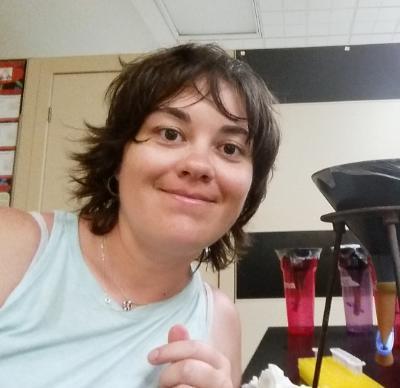-
About
I first became interested in mycology and phylogenetics during my undergrad at Boise State University (Idaho) when I took a class with Dr. Merlin White. He encouraged me to continue with a Master’s degree in his lab, and I was awarded a teaching assistantship. I taught the second half of the General Biology lab section for three years. I was able to present my research at two meetings of the International Congress of Protistology, as well as one Mycological Society of America annual meeting. I obtained grants from Sigma-Xi and the Society of Systematic Biologists. When I graduated, Dr. White told me about a position available in Dr. Matthew Smith’s lab at the University of Florida, and highly recommended me to apply for it. I was hired and subsequently accepted into the PhD program.
-
Education
- Ph.D. Plant Pathology, University of Florida, 2016-Present
- M.S. Biological Sciences, University of Boise, 2015
- B.S. Biological Sciences, University of Boise, 2011
- A.A., Clark College, Vancouver WA, 2003
-
Research
During my Master’s I worked on a little known group of insect associates called trichomycetes. The trichomycetes are microorganisms that attach to and live inside the guts of various arthropods. I performed phylogenetic analyses of the protist trichomycetes, which are species that were once thought to be fungi, but are now known to be distantly related to fungi. Now for my PhD research, I am focusing on an early-diverging group of fungi called the Zoopagomycota. These are microfungi that can be saprotrophs, parasites of other fungi or small animals (e.g. nematodes, amoebae), or associated with the guts of insects or other animals. In fact, the fungal trichomycetes are within this group and are closely related to some saprotrophic species. Most of the fungi in the Zoopagomycota have not been grown in culture, which makes them challenging to study in the lab. My work is focused on trying to resolve the evolutionary history of some of the species within the Zoopagomycota, and developing an effective method to detect their presence from environmental samples such as soil and water.
-
Publications
View a collection of my publications on Google Scholar.

